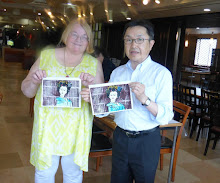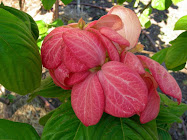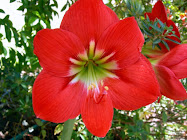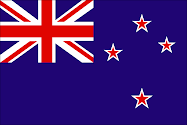Thursday 4 January
History of Waitangi Treaty Grounds
The Waitangi National Trust estate comprises 506 hectares and includes the site where the Treaty of Waitangi was first signed on the 6th of February 1840. The public have access to this important historic site because it was purchased by Lord and Lady Bledisloe in 1932, and gifted to the people of New Zealand in trust. Lord Bledisloe was Governor-General of New Zealand at the time, and he and Lady Bledisloe visited the property at the suggestion of a local lawyer and MP, Vernon Reed. (Reed had been unable to convince successive governments to purchase the land when it came up for sale).
After only five years in New Zealand and one visit to Waitangi, the Bledisloes recognised the importance of Waitangi as the birthplace of New Zealand as a nation. In November 1932, a Deed of Trust set out the objectives for a place of historic interest, recreation, enjoyment, and benefit for the people of New Zealand, and for the governance of it. Priority was given to the repair and restoration of the former home of the first British Resident to New Zealand, James Busby and his wife Agnes. Initially called the "Residency" the house was renamed, at the request of Lord Bledisloe, to the Treaty House.
Ngātokimatawhaorua.
This mighty waka (canoe) was built by the Ngā Puhi people for the 1940 centenary of the signing of the Treaty of Waitangi, and sits on the grounds at Waitangi and is believed to be the largest waka ever built.
Named Ngātokimatawhaorua., the canoe requires a minimum of 76 paddlers and can carry 55 passengers and was launched as part of the Centenary Celebrations in 1940, to mark 100 years since the signing of the Treaty of Waitangi.
Ngātokimatawhaorua Figurehead
It bears the name of the canoe of the great Polynesian explorer Kupe, who visited Aotearoa (New Zealand) many hundreds of years ago. It was carved from the trunks of three large kauri felled in the Puketi Forest, and its design is based on that of earlier waka used by Māori to travel up and down the coast of New Zealand.
It was named after the canoe which brought the Māori people from Hawaiki and was captained by Nukutawhiti, the grandson of Kupe, the Polynesian discoverer of New Zealand. Ngātokimatawhaorua is launched every year on the 6th February, to mark the signing of the Treaty of Waitangi. At 35.7 metres long and up to 2 metres wide, it weighs 12 tonnes, and is a key attraction at the Waitangi Treaty Grounds in the Bay of Islands.
Tēnā koutou katoa
This is all about New Zealand - Aotearoa - and the time I spent there. Magical times, beautiful scenery, gushing geysers, thermal wonderlands. Hear about Waitangi Day, discover the meaning of the word "Aotearoa", see the Glaciers, read about hangis and Hakas, and visit the beautiful Bay of Islands. So come with me on a journey - a journey to The Land of The Long White Cloud.
Kia ora
CHRISTCHURCH EARTHQUAKE TRIBUTE 2011
Kia ora
Watch The Haka
Subscribe to:
Post Comments (Atom)








2 comments:
Kia ora
We're creating a website for senior social studies students and would like to use an image sourced from http://newzealandaotearoa.blogspot.co.nz/2009/11/16-bay-of-islands-waitangi.html.
The image (Ngatokimatawhaorua figurehead) would be used in a video clip that looks at origins of waka ama.
How might we seek permission to use this image?
Kind Regards
Kia Ora,
Apologies, I only saw your comment now. You have my permission to use the image of (Ngatokimatawhaorua figurehead) for your video. If you could put something like Photo by BlossomFlowerGirl I would be agreeable to that.
Thanks for your interest and I'm glad to have been of help. If you can give me an email address, I will send the photo to you.
Regards,
BlossomFlowerGirl
Post a Comment